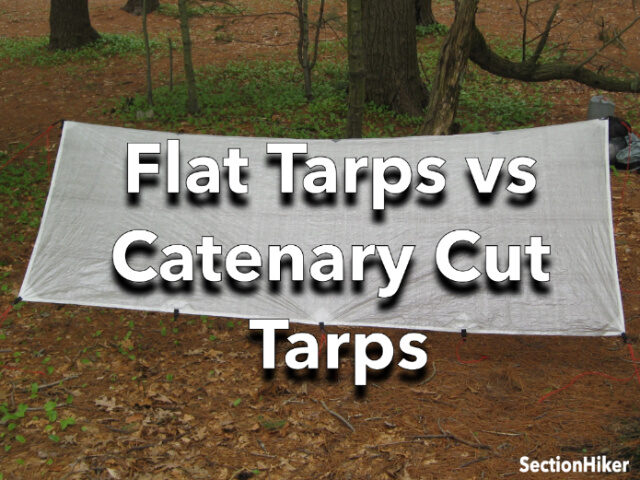
The lightest weight ultralight backpacking shelters are tarps, together with flat tarps and catenary curve tarps, generally referred to as “flat reduce” or “cat reduce” tarps for brief. They each have their execs and cons as we talk about under, but when your objective is wilderness immersion and carrying minimal gear weight, they’re the ticket.
What’s a Flat Tarp?
A flat tarp is sq. or rectangular in form, has flat edges, and 90-degree angles within the corners when laid open on the bottom. Some good examples embody the:
Flat tarps are splendidly versatile and might be arrange in all kinds of configurations relying on climate circumstances and terrain. When you can set them up in a normal A-frame pitch between two timber or trekking poles, you may fold one finish down for extra wind safety, set one up as a pyramid, or incorporate boulders, embankments, or tree trunks for much more climate safety. Setting flat tarps up in several methods is an actual artwork type and loads of enjoyable to grasp.
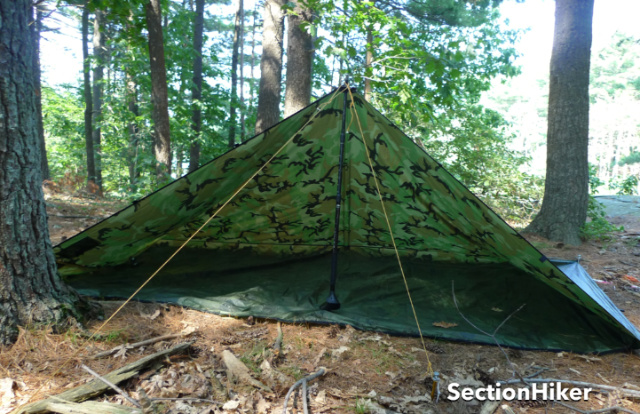
When evaluating flat tarps it’s essential to concentrate to their guylines, if they’ve them. Some flat tarps include completely connected line locs tensioners within the corners, on the ridgeline, and on the perimeters with guylines in pre-cut lengths.
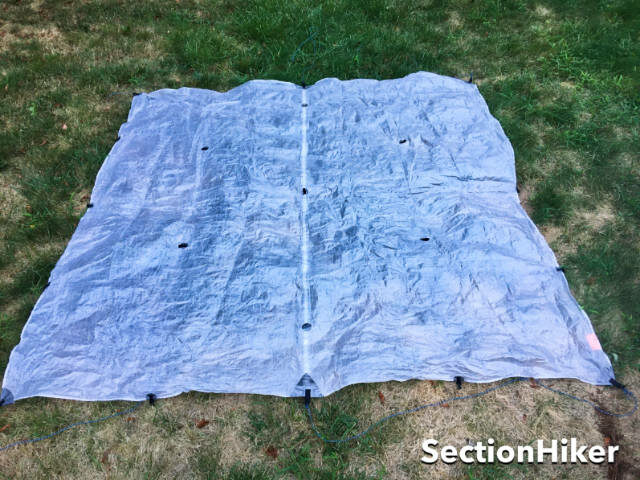
Different tarps include webbing loops as a substitute, so you may add guylines the place you want them and in several lengths if you set the tarp up. Using webbing loops makes it simpler to arrange a flat tarp in several methods and is one thing to contemplate when buying a flat tarp. However it means carrying an assortment of guylines and studying the right way to tie totally different knots. Alternatively, you need to use particular guyline {hardware} offered by corporations like Dutchware that removes the necessity to tie any knots, which is a well-liked possibility.
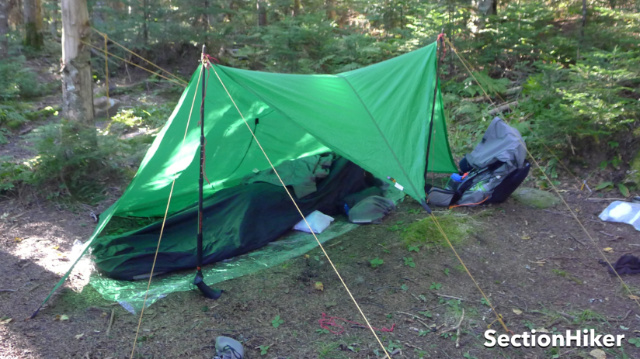
The place are you able to discover a record of all of the attainable setups you need to use with a flat tarp? There’s an infinite quantity, truly, which is what makes utilizing one a lot enjoyable. There are many tarp pitching movies on Youtube you may watch and if you’d like you may beat your head towards the wall making an attempt to pitch those in Macpherson’s traditional Tarp Shelters (free) which lists each mathematical folding and pitching risk…lots of that are impractical.

However the cause there are an infinite variety of flat tarp pitches is that you could create natural pitches that use pure options which aren’t, by nature, derivable by mathematical permutations. Whereas geeky, there’s an artwork to pitching a flat tarp that have to be discovered by doing and experimenting. It’s very satisfying if you get good at it, however most individuals don’t hassle and decide to make use of a catenary reduce tarp as a substitute. That’s not dangerous, it’s only a very totally different expertise and ability set.
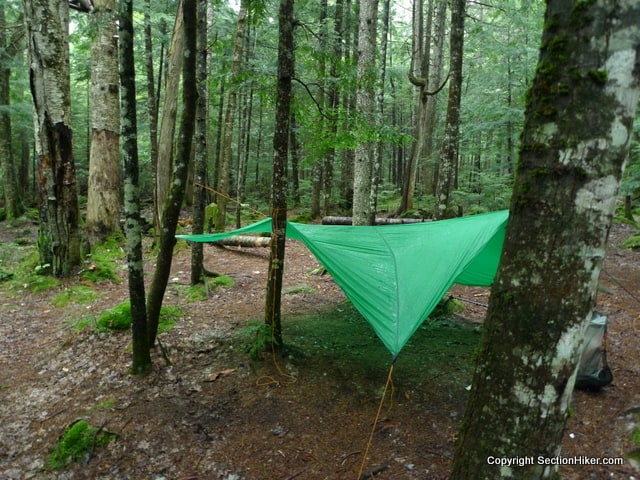
When buying a flat tarp, you’ll be confronted with a choice about which material or materials you need the tarp to be fabricated from. Some flat tarps are made with ultralight Dyneema Composite Materials (DCF) with a view to save weight, whereas others are made utilizing polyester or silnylon to save lots of value. I’ve discovered that DCF tarps are inclined to don’t have any stretch in them which makes them harder to make use of when creating advert hoc tarp pitches that incorporate pure parts, whereas a cloth like silnylon is good. It’s simply one thing to contemplate when buying a flat tarp.
What’s a Catenary Reduce Tarp?
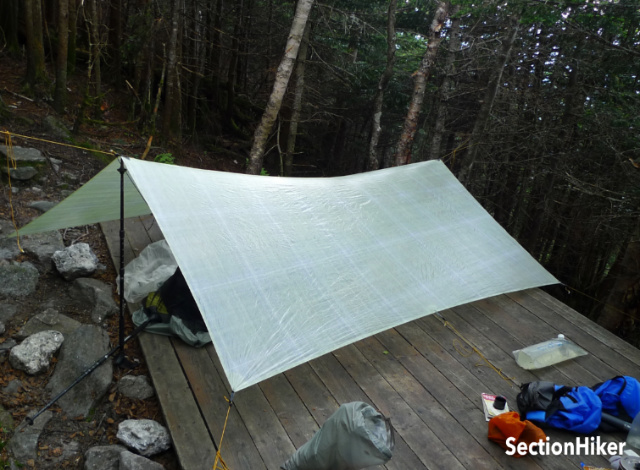
A catenary reduce tarp or “cat reduce” tarp, as they’re typically referred to as, is a sort of formed tarp, the place the perimeters of the tarp or the ridgeline are curved and the corners don’t type 90-degree angles. Pyramids or “mids” are one other sort of formed tarp however out of the scope of this dialogue. Catenary curves are formed just like the gently curved cables on a suspension bridge and are designed to be extra aerodynamic within the wind in order that the perimeters of the tarp flap much less within the wind which might be a problem with a flat tarp. Catenary curves additionally cut back the quantity of cloth wanted to create the tarp, offering a weight discount.
Some good examples of cat reduce tarps embody:
The draw back of a cat reduce tarp is that it’s designed to be arrange in a single or two totally different variations, however doesn’t supply the identical diploma of flexibility as a flat tarp. The lacking ingredient is commonly symmetry, as many cat reduce tarps are tapered and never rectangular or sq.. Some cat reduce tarps even have doorways or overhangs referred to as beaks on the finish which might additional cut back their flexibility.
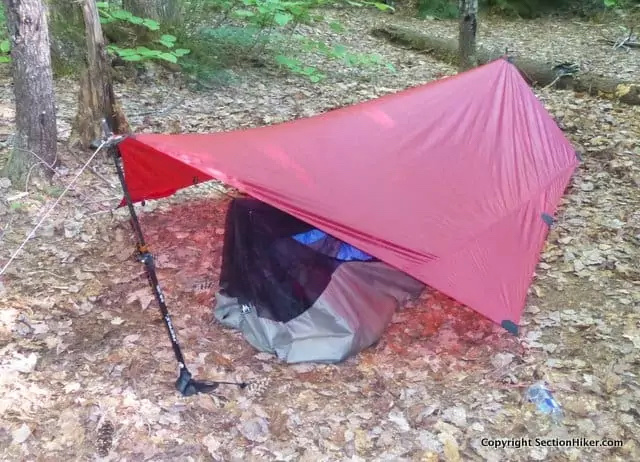
Most cat reduce tarps have line loc tensioners on the ends as a substitute of webbing loops which additional limits their flexibility, except tarps made by hammock corporations for hammocking and floor tenting, the place you may typically select between line locks, webbing loops, or different plastic {hardware}. Some cat reduce tarps even have doorways on the finish or overhangs referred to as beaks for added climate safety which additionally reduces the methods they are often pitched, though this could additional cut back the variety of methods they are often configured.
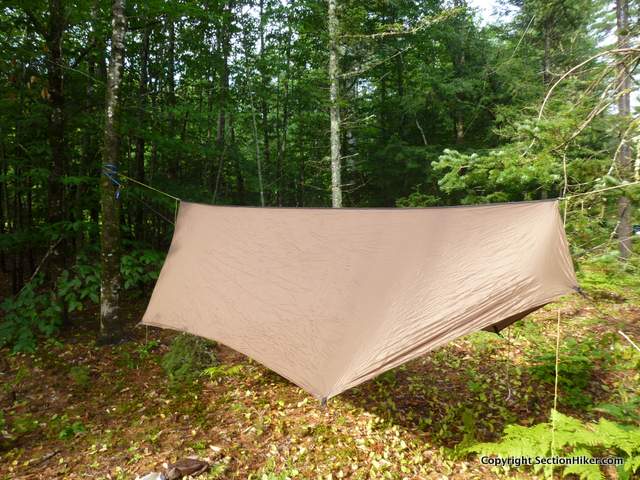
One benefit of cat reduce tarps is that they’re much simpler for tarp newbies to arrange as a result of there are so few methods to do it. Most individuals set them up in A-frame pitch with the ends tied to a tree or trekking poles and the perimeters staked to the bottom, or one facet elevated for views and air flow. There’s nothing unsuitable with that and it’s a quick option to get out of the climate.
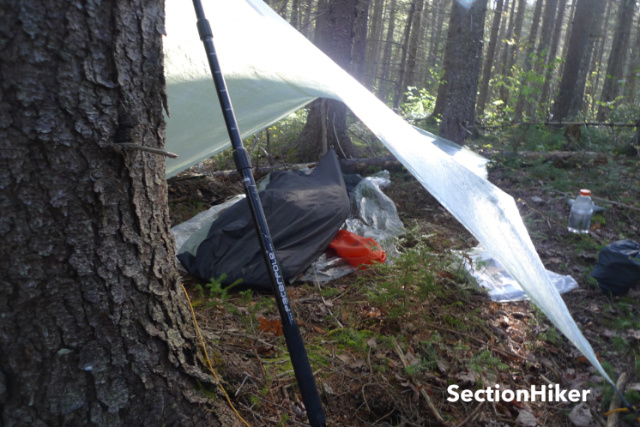
Wrap Up
As you may see, there’s a large distinction within the flexibility of flat tarps over cat reduce tarps, though substantial ability improvement is required to totally exploit it. When selecting a tarp for the primary time, one factor you wish to think about rigorously is the scale you need, not only for climate protection, but additionally as a result of it’s the primary issue that determines gear weight. It’s additionally essential to ensure that the tarp you need has hooks alongside the underside of the ridgeline, so you may cling a bivy sack or bug shelter beneath for insect safety if that might be wanted.
See Additionally
SectionHiker is reader-supported. We independently analysis, check, and fee the perfect merchandise. We solely earn a living if you are going to buy a product by our affiliate hyperlinks. Assist us proceed to check and write unsponsored and unbiased gear critiques, newbie FAQs, and free mountain climbing guides.
